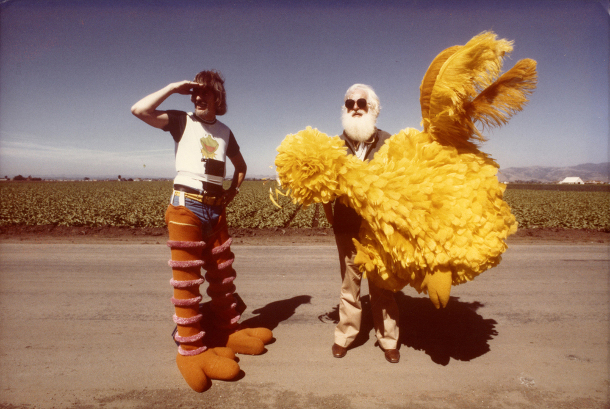Que Caramba Es La Vida (2014)
Cast: Magdalena ‘Malena’ Berrones, Estrallas de Jalisco, Las Pioneras de Mexico
Director: Doris Dörrie
Country: Germany
Genre: Documentary | Music
Editor’s Notes: The following review is part of our coverage of the Munich International Film Festival. For more information visit filmfest-muenchen.de/en and follow the Filmfest München on Twitter at @filmfestmunich.
As the title of Doris Dörrie’s new film is taken from a Mexican Mariachi song, it already establishes the theme of her new film, a documentary about the Mariachi culture in Mexico City.
In Que Caramba Es La Vida, Dörrie, mostly known for feature films such as Cherry Blossoms and The Hairdresser, follows a minority within the patriarchal Mariachi culture: female singers and all female ensembles. As this industry is mostly dominated by men, it is difficult for women to stand their ground and compete successfully. While male Mariachi mainly keep their one profession, women are expected to be a wife and a mother besides their often very stressful job. To illustrate the hardships of women pursuing their dreams despite their struggles in a city overshadowed by massive drug issues and crime in general, Dörrie introduces three different groups of women and alternates between their chapters. With many musical insertions, Que Caramba Es La Vida gives insight into the lifestyle of the Mariachi women but also explores Mexican traditions and values as this profession is deeply rooted in Mexican culture. Dörrie also structures her documentary around the very traditional holiday of Dia de los Muertos. People celebrate on the streets, pray for and remember their deceased loved ones, often accompanied by Mariachi performances.
Que Caramba Es La Vida provides an overview of Mexico’s Mariachi culture through the eyes of a female minority and occasionally adds some socially critical statements by taking a closer look onto the private lives of these women.
 Maria “Windy” del Carmen is the first Mariachi singer introduced. She performs on Mexico City’s Plaza Garibaldi, a popular square for Mariachi performances, yet dominated by male singers. Maria is one of the few women but she remains confident and states that she is still the best Mariachi on the plaza and the other performers are jealous of her. When she is off from work, Dörrie observes her private life and her interactions with her family consisting of her mother and her little daughter. Because she often works long nights, she sleeps a lot during the day and misses out on her kid’s life and is unable to take part in it completely. It often seems as if her own mother has a better connection to her daughter than she does. Despite these consequences, Maria does not want to waste her talent that also provides her financial advantages.
Maria “Windy” del Carmen is the first Mariachi singer introduced. She performs on Mexico City’s Plaza Garibaldi, a popular square for Mariachi performances, yet dominated by male singers. Maria is one of the few women but she remains confident and states that she is still the best Mariachi on the plaza and the other performers are jealous of her. When she is off from work, Dörrie observes her private life and her interactions with her family consisting of her mother and her little daughter. Because she often works long nights, she sleeps a lot during the day and misses out on her kid’s life and is unable to take part in it completely. It often seems as if her own mother has a better connection to her daughter than she does. Despite these consequences, Maria does not want to waste her talent that also provides her financial advantages.
The film also features Las Estrellas de Jalisco, an all-female Mariachi group performing during the weekends. Similar to Maria’s portrait, Dörrie concentrates on both, their private as well as their professional life as it is very difficult for women, especially young mothers. The most fascinating part of this chapter is the group’s interaction with visitors of a graveyard during the Dia de los Muertos celebration, when a family requests a song for their deceased infant child. Although the music often seems cheerful, the lyrics of these songs often deal with the hardships of life and death in general, adding a bittersweet, nostalgic and sad touch to it.
The musical scenes are obviously among the most moving ones with powerful voices, fascinating yet saddening lyrics and passionate performers.
By introducing a group of elderly women, Que Caramba Es La Vida provides information about the legendary first all-female Mariachi band of the late 1950s. Today, they are known as Las Pioneras de Mexico but its members used to perform with Las Coronelas and Las Estrellas de Mexico and travel all across South America due to their huge success. Still active in the Mariachi music scene, the elderly women complain about their successors and criticize the changed attitude towards the traditional music. They highlight that most Mariachi are not as passionate about the music as they used to be but are more interested in the money they can earn with their performances.
Whether or not that might be true, Que Caramba Es La Vida provides an overview of Mexico’s Mariachi culture through the eyes of a female minority and occasionally adds some socially critical statements by taking a closer look onto the private lives of these women. The musical scenes are obviously among the most moving ones with powerful voices, fascinating yet saddening lyrics and passionate performers.
Que Caramba Es La Vida gives insight into Mexican culture with powerful musical performances but often remains a bit too widely scoped.



